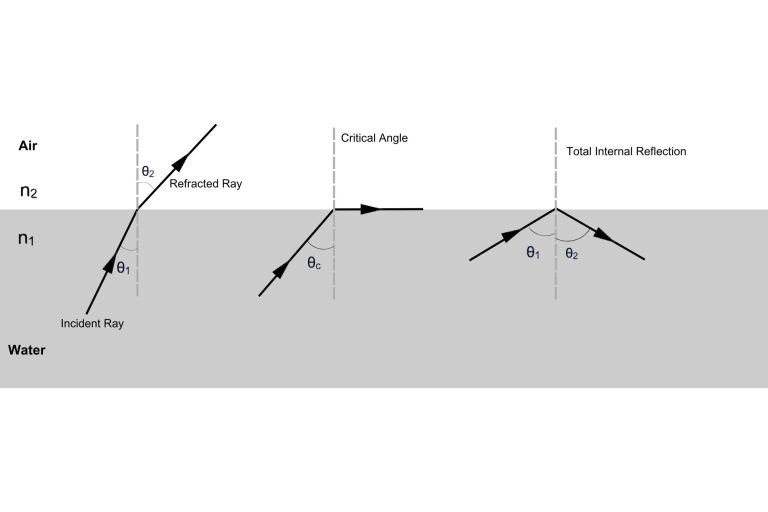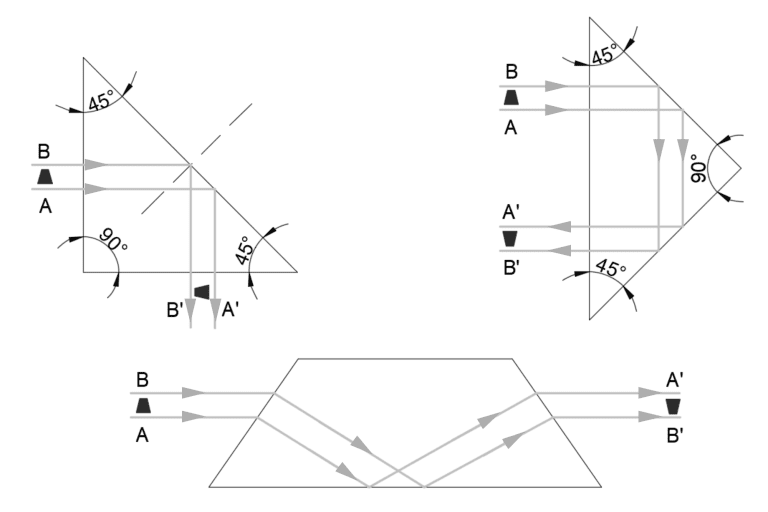Key Takeaways
- Total Internal Reflection (TIR) is a physics phenomenon where light transitions from a denser to a less dense medium, causing it to reflect back into the denser medium at a specific angle called the critical angle.
- This occurs when the angle of incidence exceeds the critical angle, resulting in total internal reflection rather than refraction.
- It has practical applications in optics, including creating mirages, enhancing diamond brilliance, designing prisms for image manipulation, and enabling efficient data transmission in optical fibers.
- These applications exploit total internal reflection’s ability to manipulate light propagation for various technological advancements.
What is Total Internal Reflection (TIR)
Introduction
Total internal reflection (TIR) is a phenomenon in physics where light rays travel from a more optically denser medium to a less optically denser medium. Consider the situation of a ray of light passing from water to air; the light ray is refracted at the junction of the two media, bending away from the normal due to the change in refractive indices. At a specific angle of incidence known as the critical angle, which is when the angle of refraction is 90 degrees, the incident ray is refracted in such a way that it travels along the surface of the water. Beyond the critical angle, the incident ray undergoes total internal reflection, reflecting back into the medium. In general, this phenomenon occurs when a ray of light in a medium with a higher index of refraction approaches another medium at an angle of incidence greater than the critical angle, which varies with the media involved. For a water-air surface, the critical angle is 48.5°, but it may slightly vary with wavelength and color due to the dependence of indices of refraction on these factors. At angles less than the critical angle, both refraction and reflection occur in varying proportions.

Total Internal Reflection finds practical applications in various optical phenomena and technologies. Some notable applications include:
Mirage: Mirage is an optical illusion caused by total internal reflection. During hot weather, the temperature difference between the ground and the air above can create conditions for TIR. Light from distant tall objects undergoes total internal reflection as it travels from denser, cooler air to rarer, hotter air, resulting in an inverted image observed by the observer.
Diamond Cutting: The dazzling appearance of diamonds is attributed to the careful cutting by diamond craftsmen. By shaping the diamond to exploit total internal reflection, light entering the diamond undergoes multiple reflections. The small refractive index of diamond (approximately 24.4°) contributes to the diamond’s brilliance and sparkle.
Prisms: Prisms are designed to utilize total internal reflection for various optical applications. When light enters a prism at a specific angle, it undergoes total internal reflection either at 90° or by 180°, producing an inverted image without altering the object’s size. Prisms are integral in optical systems for tasks such as dispersion and image rotation.
Optical Fibers: Optical fibers, composed of glass or quartz, leverage total internal reflection for efficient data transmission. An optical fiber consists of a core and cladding, with the cladding having a lower refractive index than the core. Light signals transmitted through the optical fiber undergo repeated total internal reflections, ensuring minimal signal loss. Optical fibers are widely employed for high-speed data, signal, and video transmission, with the added advantage of maintaining data integrity even if the fiber is bent or twisted.

GREAT ARTICLE!
Share this article to gain insights from your connections!

